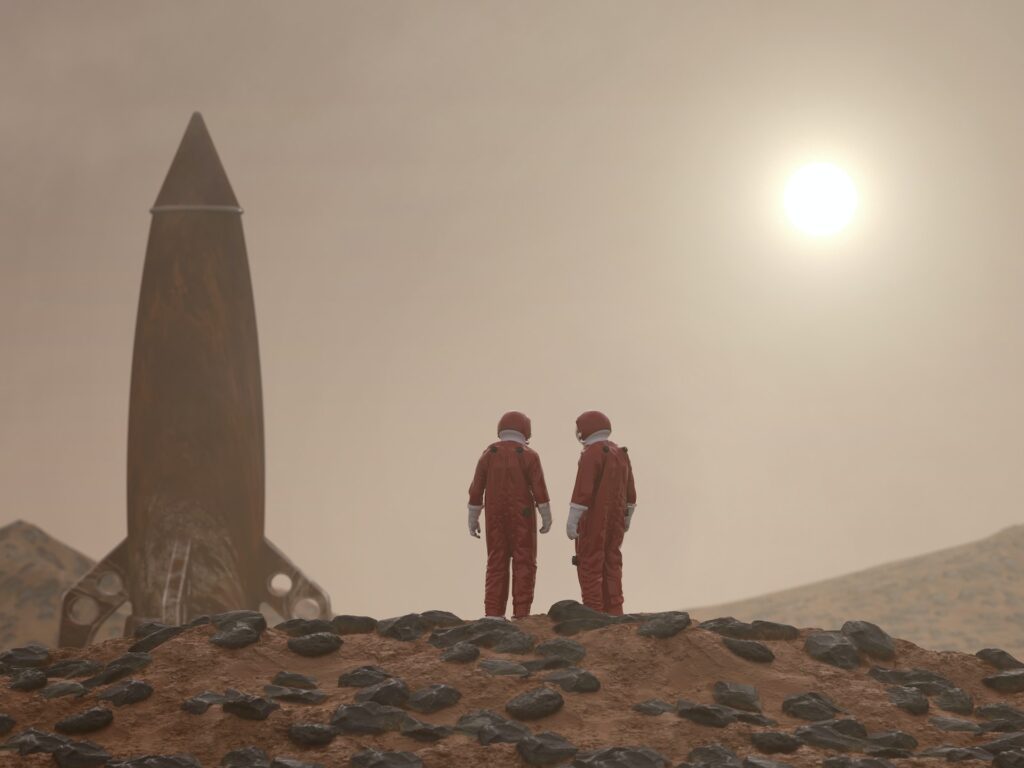SpaceTech is pushing the boundaries of what can be achieved in the final frontier. It offers incredible opportunities for scientific research, commercialization, and exploration. As more companies and governments invest in SpaceTech, the future of space exploration and its potential impact on our daily lives is becoming more and more exhilarating.
Here are some of the coolest SpaceTech companies to watch out for in 2023
Interstellar Lab
With the mission of building and operating fully self-sufficient biomes on Earth and other planets, Interstellar Lab aims to develop innovative technologies and designs that can help us thrive in extreme environments. Their innovative approach to creating sustainable ecosystems could pave the way for humanity’s future in space and on Earth.
ThrustMe
ThrustMe‘s innovative propulsion technology is based on an electric propulsion system that uses a non-toxic, high-performance fuel and a unique ion engine design that is more reliable and efficient than traditional propulsion systems. They are poised to play a significant role in the growing small satellite market, enabling more efficient and sustainable space operations for a range of applications, including Earth observation, telecommunications, and scientific research.
Infinite Orbits
Infinite Orbits aims to provide reliable, turnkey in-orbit services to satellite operators worldwide, supporting their fleet management from frequency application and inspection to life extension. Infinite Orbits offers two generations of in-orbit services, Autonomous Space Navigation and Docking, and is ready to provide high-end solutions to cover all satellite servicing needs.
Kurs Orbital
Kurs Orbital provides technology to support various space activities, including extending the life of satellites, transporting materials and people in space, and cleaning up space debris. The company’s ARCap Module enables satellite life extension, docking with space stations, and space debris removal missions in fully autonomous mode.
Space Forge
Space Forge develops space-based manufacturing and material processing technologies. The company aims to take advantage of the unique environment of space to create high-value products that cannot be made on Earth due to the lack of gravity. Space Forge’s technology includes a furnace for metal alloy production, a recycler for metal scrap, and a platform for bioprinting.
Satim
Satim utilizes synthetic-aperture radar (SAR) data obtained from satellites to develop advanced analytics solutions powered by artificial intelligence. SAR is a type of active data collection involving a sensor emitting energy and then capturing the energy reflected back after interacting with the Earth’s surface. This signal can be used to detect surface-level characteristics like moisture and structure. Satim has successfully employed this technology to create products that can identify and categorize ships in the ocean.
EnduroSat
EnduroSat develops CubeSats, which are miniaturized satellites that serve various purposes such as remote sensing, Earth observation, and transmissions. EnduroSat has a diverse customer base worldwide, including research institutions, universities, and private companies, and has successfully launched CubeSats for a variety of missions, including climate monitoring, scientific research, and telecommunications.
POLARIS Raumflugzeuge
POLARIS Raumflugzeuge is working on an innovative space launch and hypersonic reusable transport system that operates similarly to an aircraft. This groundbreaking system, called AURORA, is a fusion of rocket launcher and aircraft technologies with a distinct vehicle design that promises to enable routine low-cost and secure access to space.
Exploration Company
The Exploration Company‘s core business involves resupplying space stations and returning to Earth. The company is highly ambitious, developing a reusable launch vehicle that can orbit the Earth and the moon for extended periods while conducting space experiments, research, and development. Their latest project, Nyx, is transitioning from transporting cargo to carrying humans.
Isar Aerospace
Isar Aerospace focuses on the development of space launch vehicles. Their primary objective is to improve accessibility to space by providing reliable, cost-effective, and sustainable launch services to small satellite customers. Isar Aerospace is working on a series of reusable rockets that can carry payloads up to 1000 kg into low-Earth orbit.
Yuri Gravity
Unlike on Earth, where cells are limited in their development, microgravity allows for the formation of complex 3D structures. This opens up entirely new possibilities for research on cell behavior, regenerative medicine, and drug testing. Yuri Gravity‘s biotech research and development in this unique atmosphere are poised to make significant advances in drug delivery and the development of tissues and organs in the coming years.
D-Orbit
D-Orbit specializes in developing innovative solutions for the space industry. Its main focus areas are orbital transportation, in-orbit servicing, and debris removal. The company’s flagship product, the ION Satellite Carrier, is a platform that enables small satellite launches into space. Its D-SAT in-orbit servicing solution enhances the lifespan of satellites by providing maintenance services while they are in orbit. Its Debris-Mitigation and Removal Device (DMRD) technology removes space debris and reduces the risk of satellite collisions.
ClearSpace
ClearSpace‘s primary mission is to remove space debris, which has become a significant threat to operational satellites and future space missions. The company’s first mission, ClearSpace-1, is scheduled to launch in 2025, targeting the Vespa payload adapter, which was left in orbit after a European Space Agency (ESA) mission in 2013. ClearSpace-1 will use a four-armed robotic system to capture and safely de-orbit the Vespa adapter, ensuring it burns up in the Earth’s atmosphere.
AdapTronics
AdapTronics has developed a technology to promote sustainable logistics in both space and on Earth. Their technology is based on an electrostatic membrane that can handle and manipulate objects of different shapes. It also integrates a thin-film sensor technology that becomes adhesive when activated electrically, allowing it to grip any object securely and sense any surface.
Advancements in space technology have opened a plethora of possibilities that were once thought impossible. From self-sufficient biomes to advanced medical treatments and therapies, we truly are on the verge of the final frontier.
